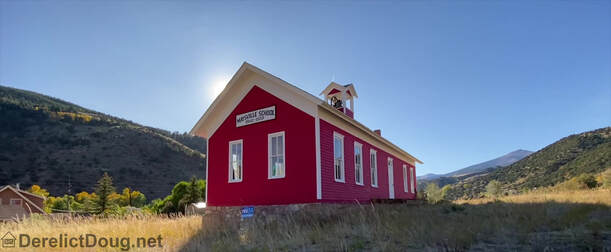
lorado has many one-room and small schoolhouses. While these are no longer used the structures provide a fascinating glimpse into the past. Giving us insights into the lives of the American Pioneers. Many of the ranching and mining communities I cover had schools that no longer exist or were turned into private residences. Little records exist besides the oral traditions and the fact that these buildings were once the hub of many children's lives.
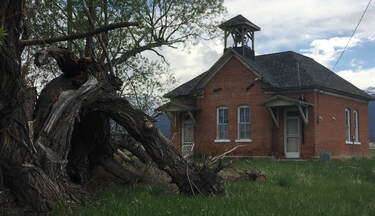
Today I would like to focus on two such examples; however, there are countless other schoolhouses that dot the landscape. But before I dive into the specific locations, I would like to give a little more context into the region of Colorado that they rest in. The area in modern times is Called “Chaffee County”; however, Chaffee was only created when Lake County was divided into multiple jurisdictions. The original Lake county was designated in the area long before Colorado received its statehood. The Lake County Territory stretched from the headwaters of the Arkansas River to the Utah state line. This is significant because many of the schoolhouses were built in the 1860s, this would be about 16 years before Colorado was a state. Just 12 years before this land was a part of Mexico and at the time the schools were built it was primarily inhabited by Native Americans. These are some of the earliest structures built by Westerners and illustrates that pioneers had an emphasis on education.
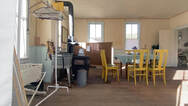
These schools often were tiny and uncomfortable log cabins or one-room schoolhouses. They were heated by wood or coal stoves. They had little insulation and tended to be drafty in winter. Most of the original wooden schools burnt and were replaced by brick or stone buildings
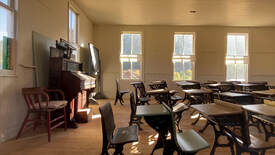
The teacher was often only one year removed from school. Literally having been a part of the class just one year before. The maintenance of the building all rested on the Teacher. They served as the principal, janitor, lunch lady, and everything in between. The “three R’s”, readin’, ritin’, and rithmetic were the primary focus of the lessons. They had daily oral recitations done in stages (or grades). Spelling bees, math matches, and other games were later introduced to make learning more fun. Many of the students did not go further than 4th grade. However; many pupils desired to learn enough to self teach and become successful members of society.
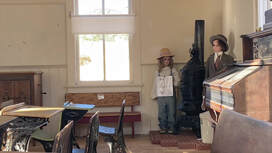
Gas Creek School
This charming little red brick schoolhouse was built in 1890 and officially formed the “Gas Creek School District”. It was built on land that was donated by the Fehling family on condition that if it was not used as a school within two years, ownership would revert back to the family. However, it operated as the sole school in the district for 49 years. The double entranceway was added in 1909 and was used to segregate boys and girls. The two out-houses in the back of the school were installed by the Work Progress Administration (WPA) project in 1930. The school held classes in the building up until 1942. 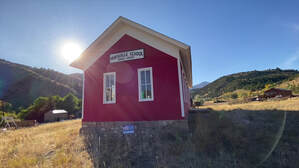
The interior has been modified into a residence. The exterior of the building has changed little and is an iconic example of early 20th-century rural schools. The schoolhouse eventually made its way back to the Fehling family by 1958 and was sold a few more times. During this period it fell into disrepair. Fortunately, In 2019 it was added to the National Register of Historic Places. This was made possible by a grant from the Colorado State Historical Fund. While we have not seen any restoration, I am anxiously waiting to see what this historical gem looks like after a little polishing!
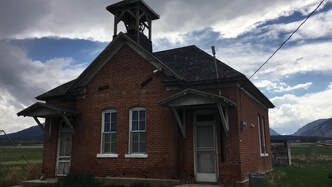
Maysville School
About 40 miles south of the Gas Creek District is the site of the former Maysville School district. Maysville began with the name of “Crazy Camp.” Why it was named that is not known, but it was changed to Maryville. It was named after a local pioneer “Mary”. However; over the years it was shortened to “Maysville”. And kept this version of the name to this day. Personally, I kind of prefer “Crazy Camp”, but I can see why they may have wanted to change it. Maysville went on to become one of the richest districts in the area. 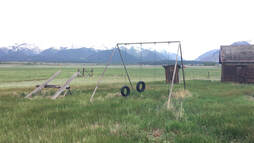
Maysville School began in 1870, six years before Colorado became a part of the United States. The bell that beckoned students was originally hung in the Union Sunday School and Congregational Church building. At some point, those buildings were moved to Salida. At that time the bell was hung in the school tower, where it sits to this day.
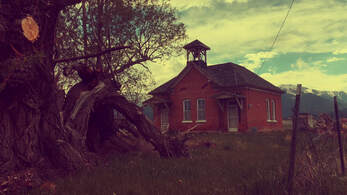
Maysville was known for offering its teachers slightly better salaries. That said they were given about $6.25 monthly. When you consider that the average laborer was paid $8-9 a month, this was still a low salary. The Maysville teachers had the added benefit of on-site living quarters. Because of this, water was piped into the school building. Which made it one of the few country schools without a well, water bucket, and dipper. However; these amenities were not enough to keep most teachers for more than a year. In-fact only two teachers returned to teach for a second year.
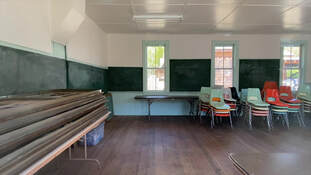
The Maysville school held classes until 1958 when most of the regional schools were closed and consolidated into two large school districts (Salida and Buena Vista). At that time the Maysville school became a bus barn to house the bus used to take students to school in Salida. In 1977 the school was donated to the Sakida Historical Society (SHS). At the time there was some controversy. Some felt the school district should not be giving away this property without having an idea of what it is worth. Glen Everett from the SHS was quoted as saying that he felt “the building was worth more for its historical value than what the district could get for it on sale”. It has since been beautifully restored to its original state. It is now used as a museum for the area.
Learn when you can, visit the Salida Museum Here: http://bit.ly/SalidaMuseum
0 Comments
|
AuthorThank you for visiting! This is a collection of media from the lost and abandoned corners of the world. Please have a look around, I hope you enjoy. Archives
April 2022
Categories
All
|
Libraries |
Support |
|


